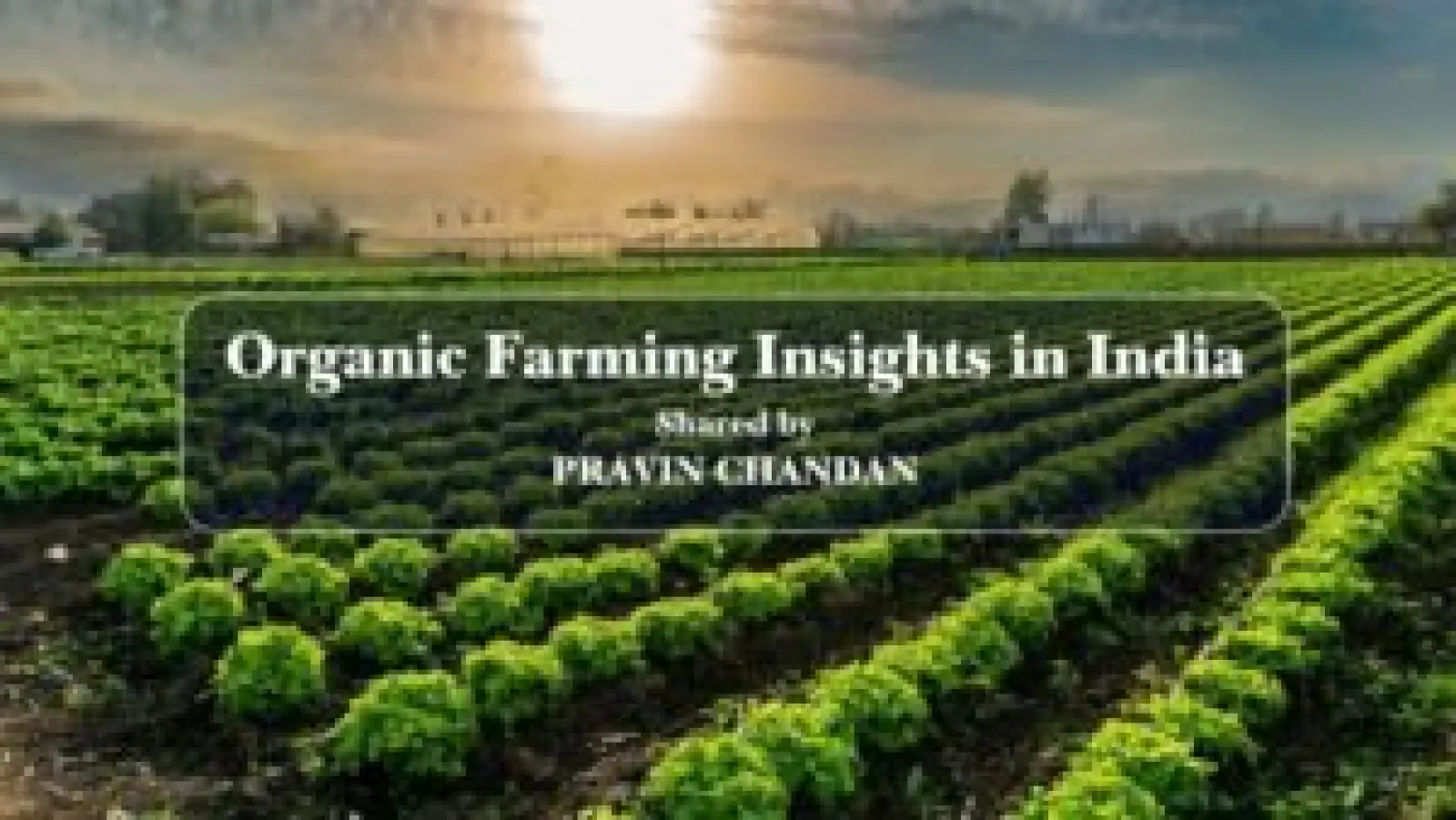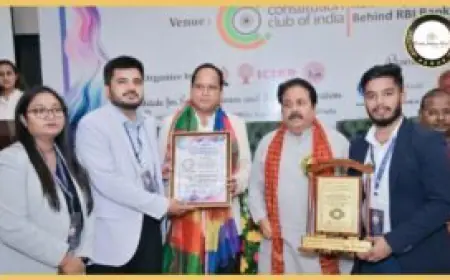Organic Farming Insights in India: Shared by Pravin Chandan
Chennai (Tamil Nadu) [India], February 27: With the population on a consistent rise worldwide, agricultural systems need to accommodate the growing food demand. As a result, they have implemented several unsustainable methods to produce higher yields. These methods use chemicals excessively, leading to multiple global issues like soil degradation, soil erosion, water pollution, loss of [...]

Chennai (Tamil Nadu) [India], February 27: With the population on a consistent rise worldwide, agricultural systems need to accommodate the growing food demand. As a result, they have implemented several unsustainable methods to produce higher yields. These methods use chemicals excessively, leading to multiple global issues like soil degradation, soil erosion, water pollution, loss of biodiversity, and climate change.
Organic farming in India is an incredible solution to help achieve food security goals through sustainable agriculture practices.
What is Organic Farming?
Organic farming refers to natural, eco-friendly, and sustainable practices of farming. Its produce is clean and healthy for the consumers and economically advantageous for the farming communities. The practice focuses on reducing or eliminating external inputs like artificial fertilizers, pesticides, additives, etc.
Growth of Organic Farming in India
- India ranks number one for the total number of organic farmers as per 2021 data and sixth for the World’s Organic Agricultural land. (Source: FIBL & IFOAM Year Book, 2023).
- The world’s first state to become completely organic was Sikkim. States like Uttarakhand and Tripura follow with similar targets.
- The use of chemicals in North East India is much less than in the rest of the country.
- The total area registered for organic farming under the National Programme for Organic Production is 10.17 million hectares as of 31st March 2023.
- Madhya Pradesh has the largest area covered under organic certification.
- In 2022-2023, India produced approximately 2.9 million metric tons of certified organic products. These included different varieties of food products like sugarcane, millet, cereals, oil seeds, pulses, cotton, tea, coffee, spices, fruits, vegetables, dry fruits, aromatic and medicinal plants, fibre, processed foods, etc.
Methods of Organic Farming in India – A Brief Overview by Pravin Chandan
Different techniques of organic farming are practised in India. Here’s a brief overview of each of them.
- Soil Management
Soil management is the first organic farming technique. It focuses on using bacteria available in animal waste to increase the soil’s fertility and productivity.
- Weed Management
Weed removal is the next organic farming method. One option is to move or cut the weed. The second option is mulching. Farmers use plant residue or a plastic film on the soil’s surface to restrict the weed’s growth.
- Crop Diversity
One of India’s most famous organic farming methods is crop diversity. It focuses on cultivating different crops together to cater to the growing crop demand.
- Natural Management of Organisms
To save the soil and crops, it is essential to control the growth of organisms. This organic farming method uses natural or fewer chemicals, pesticides, and herbicides to protect soil and crops.
- Biological Pest Control
This method uses living organisms with or without chemicals to control pests.
Many Indian farmers use the above methods of organic farming in India. The practice is affordable as there is no expense of pesticides, fertilizers, or HYV seeds for crop plantation. Farmers can earn a good return on investment using local and inexpensive inputs.
Source: https://pravinchandan.com/blog/post/Organic-Farming-Insights-in-India-Shared-by-Pravin-Chandan
If you have any objection to this press release content, kindly contact pr.error.rectification@gmail.com to notify us. We will respond and rectify the situation in the next 24 hours.


































































































